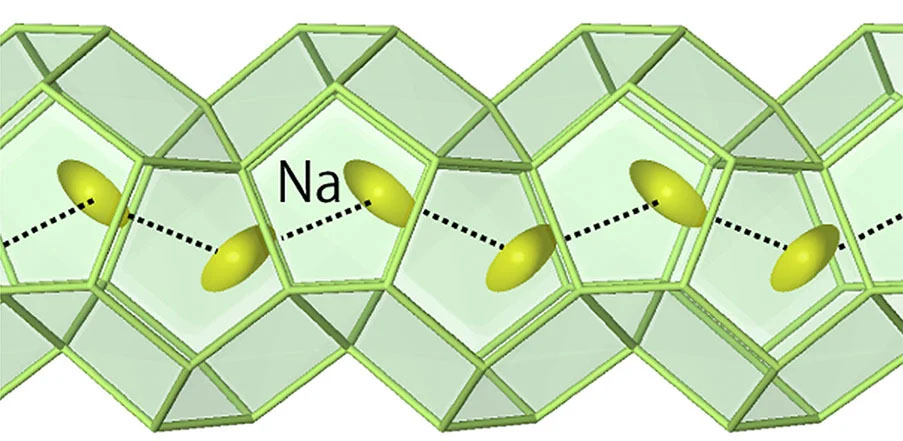| Jan 19, 2023 |
|
(Nanowerk News) Controlling a material’s thermal conductivity can help insulate our homes, improve the performance of electronic devices, conserve power consumption in cars, and generate greater power efficiency. Now, a group of researchers has unveiled a novel mechanism that leads to further suppression of thermal conductivity in thermoelectric materials, something that will help develop new guidelines for producing high-performance thermoelectric materials.
|
|
A group of researchers has recently unveiled a novel mechanism that leads to further suppression of thermal conductivity in thermoelectric materials, something that will help develop new guidelines for producing high-performance thermoelectric materials.
|
|
Details of their research were published in the journal Advanced Materials (“Correlated rattling of sodium-chains suppressing thermal conduction in thermoelectric stannides”).
|
 |
| In intermetallic compounds with tunnel spaces in the crystal structure (Na-X-Sn compounds, where X is Al, Ga, In, or Zn), Na atoms in the tunnel vibrate (rattling) with large amplitude along the elongation direction of the tunnel, and the local interatomic distance of these Na atoms. (Image: Takahiro Yamada et al.)
|
|
Controlling the ease with which heat is transmitted through a material, i.e., thermal conductivity, has a wide range of applications to our everyday lives: from insulating our homes, to improving the performance of electronic devices, as well as enhancing the energy conservation of automobiles and aviation and generating greater power efficiency.
|
|
Scientists are increasingly interested in thermal management technology as a means to solve various heat-related problems and to effectively utilize thermal energy.
|
|
When the research group placed atomic chains into tunnel spaces within intermetallic compound crystal structures, the atoms strongly correlated with each other in large amplitude vibrations, or “rattling.” Vigorous experiments and theoretical calculations demonstrated that the stronger the correlation between rattling atoms, the greater the decrease in thermal conductivity.
|
|
“Since advancements in thermoelectric materials require lower thermal conductivity, our discovery can provide new guidelines for engineering improved thermoelectric materials,” states Takahiro Yamada, professor at Tohoku University’s Institute of Multidisciplinary Research for Advanced Materials (IMRAM) and co-author of the paper.
|


